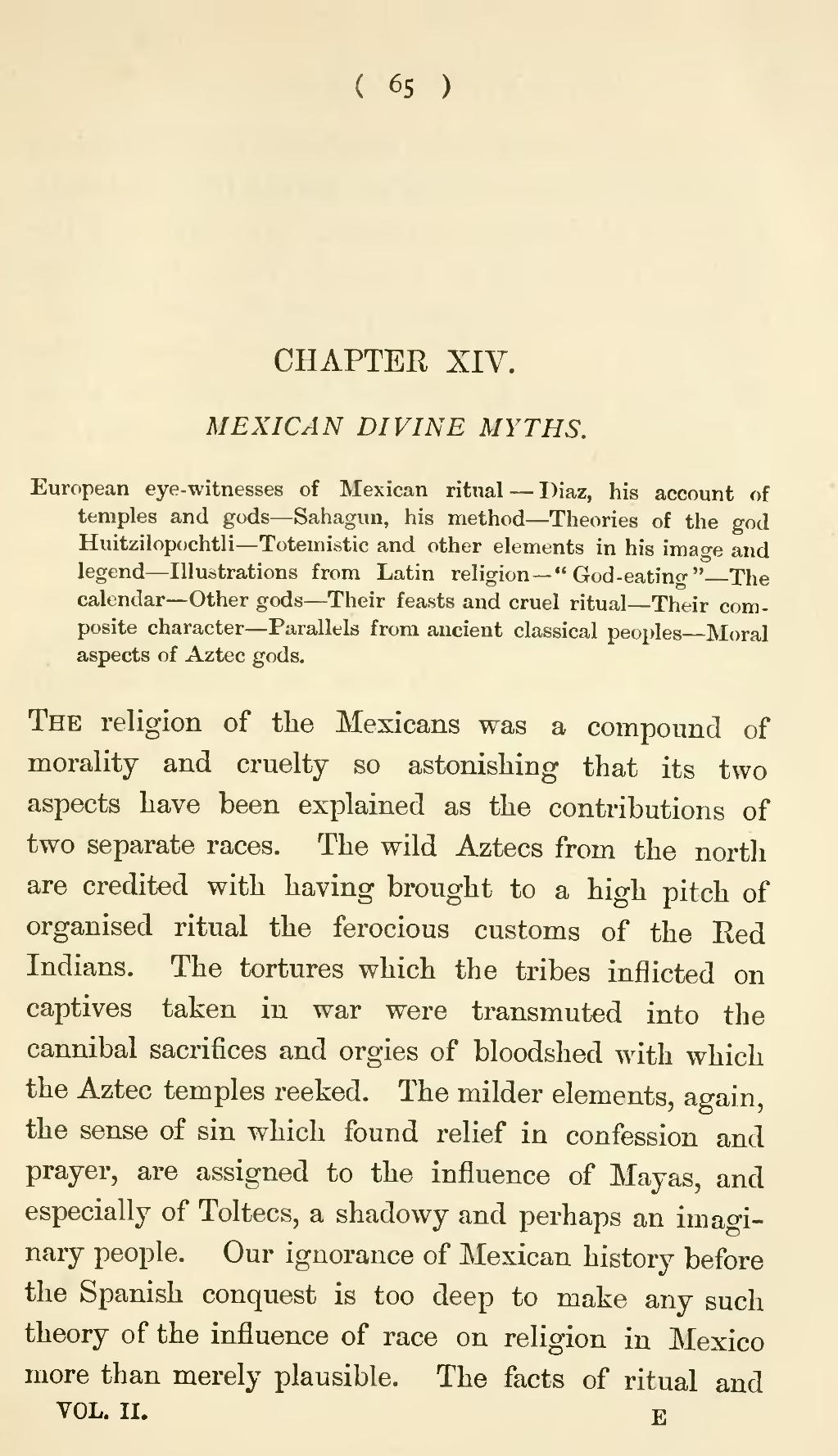CHAPTER XIV.
MEXICAN DIVINE MYTHS.
European eye-witnesses of Mexican ritual—Diaz, his account of temples and gods—Sahagun, his method—Theories of the god Huitzilopochtli—Totemistic and other elements in his image and legend—Illustrations from Latin religion—"God-eating"—The calendar—Other gods—Their feasts and cruel ritual—Their composite character—Parallels from ancient classical peoples—Moral aspects of Aztec gods.
The religion of the Mexicans was a compound of morality and cruelty so astonishing that its two aspects have been explained as the contributions of two separate races. The wild Aztecs from the north are credited with having brought to a high pitch of organised ritual the ferocious customs of the Red Indians. The tortures which the tribes inflicted on captives taken in war were transmuted into the cannibal sacrifices and orgies of bloodshed with which the Aztec temples reeked. The milder elements, again, the sense of sin which found relief in confession and prayer, are assigned to the influence of Mayas, and especially of Toltecs, a shadowy and perhaps an imaginary people. Our ignorance of Mexican history before the Spanish conquest is too deep to make any such theory of the influence of race on religion in Mexico more than merely plausible. The facts of ritual and
